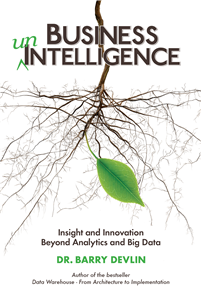Data warehousing
February 2012
A Timeless Perspective On Perceiving & Managing Information in Our Imprecise World -- 3rd Edition
Let's step back to the year 1978. Sony introduces hip portable music with the Walkman, Illinois Bell Company releases the first mobile phone, Space Invaders kicks off the video game craze, and William Kent writes Data and Reality. We have made amazing progress in the last four decades in terms of portable music, mobile communication, and entertainment, making devices such as the original Sony Walkman and suitcase-sized mobile phones museum pieces today. Yet remarkably, the book Data and Reality is just as relevant to the field of data management today as it was in 1978. Data and Reality gracefully weaves the disciplines of psychology and philosophy with data management to create timeless takeaways on how we perceive and manage information. Although databases and related technology have come a long way since 1978, the process of eliciting business requirements and how we think about information remains constant. This book will provide valuable insights whether you are a 1970s data-processing expert or a modern-day business analyst, data modeler, database administrator, or data architect.This third edition of Data and Reality differs substantially from the first and second editions. Data modeling thought leader Steve Hoberman has updated many of the original examples and references and added his commentary throughout the book, including key points at the end of each chapter. The important takeaways in this book are rich with insight yet presented in a conversational writing style. Here are just a few of the issues this book tackles:Has "business intelligence" replaced "artificial intelligence"?Why is a map's geographic landscape analogous to a data model's information landscape?Where do forward and reverse engineering fit in our thought process?Why are we all becoming "data archeologists"?What causes the communication chasm between the business professional and the information technology professional, and how can the logical data model bridge this gap?Why do we invest in hardware and software to solve business problems before determining what the business problems are in the first place?What is the difference between oneness, sameness, and categories?Why does context play a role in every design decision?Why do the more important attributes become entities or relationships?Why do symbols speak louder than words?What's the difference between a data modeler, a philosopher, and an artist?Why is the 1975 dream of mapping all attributes still a dream today?What influence does language have on our perception of reality? Can we distinguish between naming and describing?From Graeme Simsion's foreword:While such fundamental issues remain unrecognized and unanswered, Data and Reality, with its lucid and compelling elucidation of the questions, needs to remain in print. I read the book as a database administrator in 1980, as a researcher in 2002, and just recently as the manuscript for the present edition. On each occasion I found something more, and on each occasion I considered it the most important book I had read on data modeling. It has been on my recommended reading list forever. The first chapter in particular should be mandatory reading for anyone involved in data modeling. In publishing this new edition, Steve Hoberman has not only ensured that one of the key books in the data modeling canon remains in print, but has added his own comments and up-to-date examples, which are likely to be helpful to those who have come to data modeling more recently. Don't do any more data modeling work until you've read it.
About William:
William Kent (1936-2005) was a renowned researcher in the field of data modeling. Author of Data and Reality, he wrote scores of papers and spoke at conferences worldwide, posing questions about database design and the management of information that remain unanswered today. Though he earned a bachelor's degree in chemical engineering and a master's in mathematics, he had no formal training in computer science. Kent worked at IBM and later at Hewlett-Packard Laboratories, where he helped develop prototype database systems. He also served on or chaired several international standards committees. Kent lived in New York City and later Menlo Park, Calif., before retiring to Moab, Utah, to pursue his passions of outdoor photography and protecting the environment.
About Steve:
Steve is currently a data modeling consultant and instructor. He taught his first data modeling class in 1992 and has educated more than 10,000 people about data modeling and business intelligence techniques since then. Steve balances the formality and precision of data modeling with the realities of building software systems with severe time, budget, and people constraints. In his consulting and teaching, he focuses on templates, tools, and guidelines to reap the benefits of data modeling with minimal investment. Steve is the author of five books on data modeling, the founder of the Design Challenges group, and inventor of the Data Model Scorecard.































